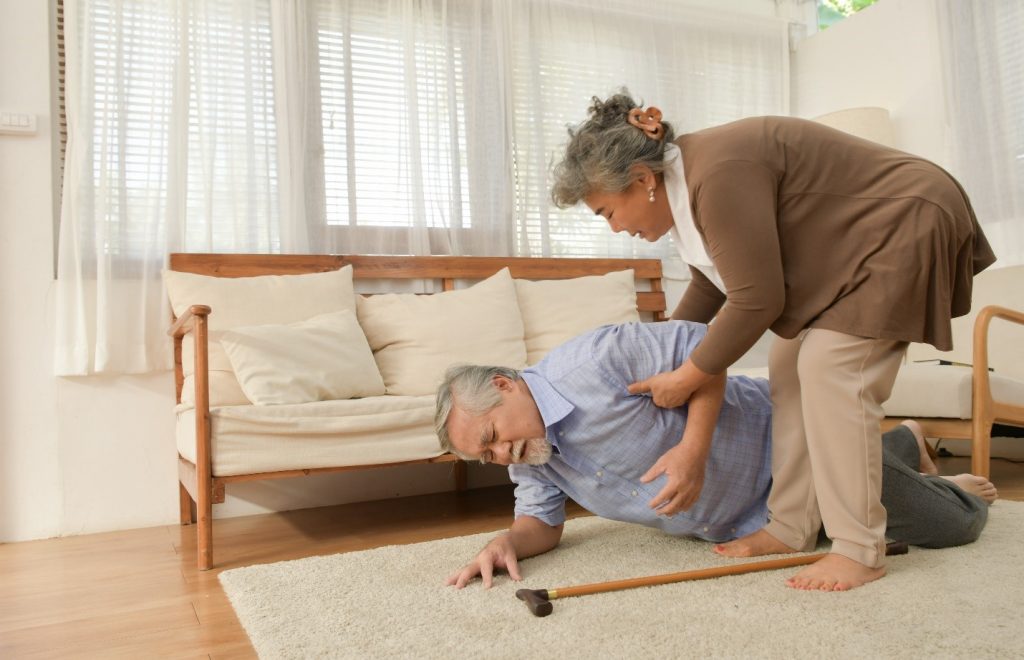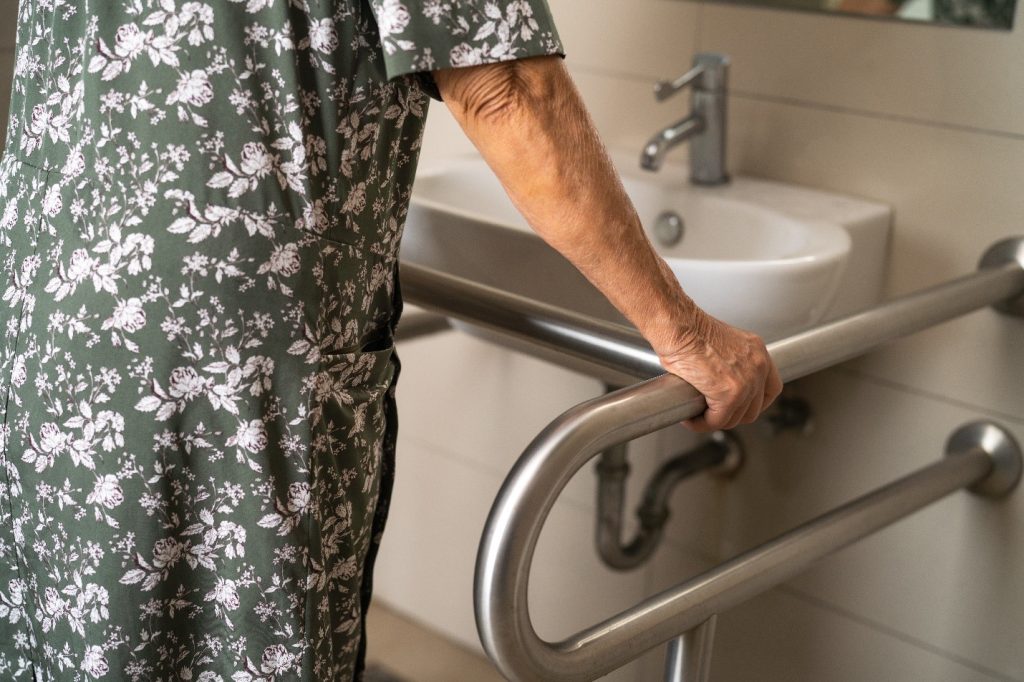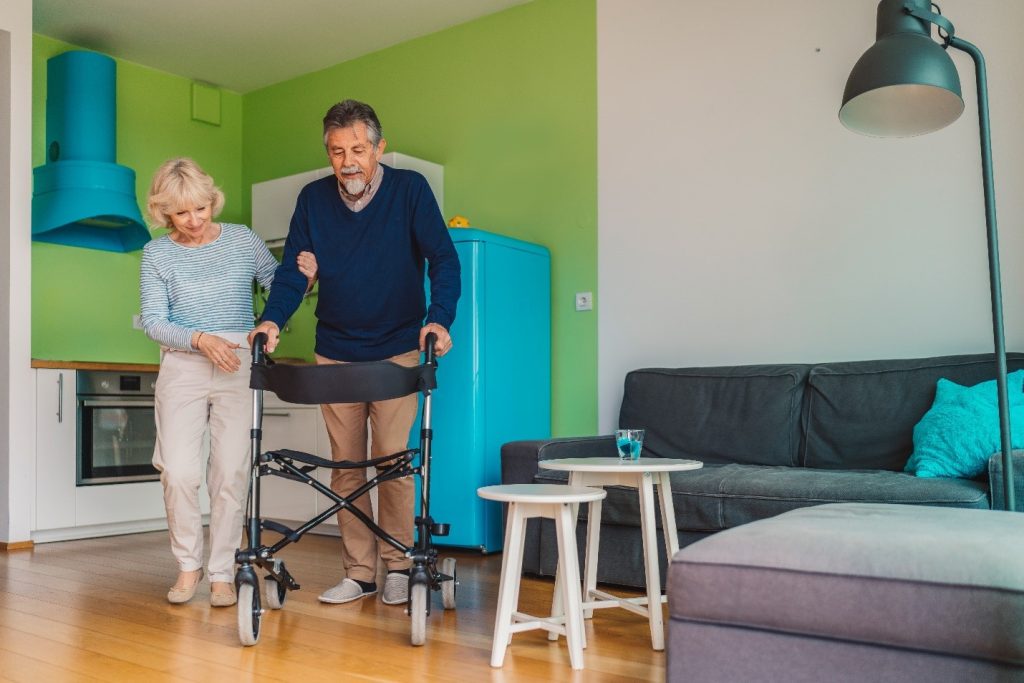As we start to age, it’s not job instability or rising living costs that scare us the most; it’s the fear of being alone and falling. According to the World Health Organization, in the United States alone, 20–30% of older adults with functional decline who fall suffer injuries like bruises, hip fractures, and even head trauma in severe cases. What’s more concerning is that one out of ten falls lead to injuries that force older adults to have mobility issues; limit their activities and seek medical attention if the fall is severe. And soon, hospitalization due to falls at home becomes a new harsh reality for many families.

For many senior citizens, just the mere thought of a simple trip or slip can bring feelings of anxiety, both for themselves and their families. If you are a caregiver or a loved one, it’s important to understand this reality and take steps to reduce the risk factors of falls.
Let’s turn those worries into a proactive plan for safety and well-being!
What are the Most Common Causes of a fall in the Home?
Every one of us wants to age in the comfort of our home surrounded by family. However, our home can sometimes mask hidden dangers that could lead to serious accidents and even hospitalization due to fall cases. This is why it’s important to identify the common causes of an accident:
Environmental Hazards around the House
The conditions and layout of our home play an important role in leading to falls. Here are some potential hazards:
- Poor Lighting. Dark hallways, dimly lit staircases, and obstacles in common areas can make it challenging for anyone to walk clearly, but the case becomes more precarious for older adults.
- Clutter and Loose Rugs: Clutter around the property, unsecured rugs, and items left around the floor can introduce some serious tripping hazards.
Health Related Factors
Aging introduces deteriorating health conditions in our lives, and physical limitations dramatically increase the risk of hospitalization due to falls at home.
- Medication Side Effects. Some medications for older people can have side effects like dizziness, drowsiness, or blurred vision, all of which can contribute to falls.
- Chronic Health Conditions. Conditions like arthritis, Parkinson’s disease, and diabetes limit mobility and make the muscles rigid. On top of that, aging results in balance disorders which can make it difficult to prevent trips and falls.
- Depth Perception and Mobility: Poor vision can affect depth perception and make it challenging to judge distances, which can cause missteps and falls.
Practical Tips to Prevent Hospitalization Due to Falls at Home
According to the CDC, more than 1 million fall-related injuries and hospitalizations happen each year among older adults. This alarming statistic highlights that hospitalization due to fall emergencies is not rare to take place if you have senior citizens at your home.

Here are some useful tips to help you prevent yourself or your loved one from experiencing this painful accident:
Modify Your Home to Reduce Risks of Fall
It’s important to modify your home environment to guarantee the safety of older adults living in your home and make them feel confident and independent.
- Install Grab Bars
Install grab bars in places like bathrooms (near toilets and in showers or tubs) and near the stairs for support.
- Improve Lighting
Install night lights in bedrooms, hallways, and bathrooms so these areas are well-lit during the night. Use motion-sensor lights to automatically illuminate pathways when movement is detected, reducing the risks of falls in the dark.
- Get Rid of Tripping Hazards
Clear common pathways and rooms from tripping hazards like cords or personal belongings. Secure rugs with non-slip backing or tape them down. Arrange the furniture away from pathways so there is enough space to walk without hitting the sofa, bed corner or other household furniture.
Encourage the Use of Mobility Aids and Devices
Mobility aids are a helping hand for older adults who experience a loss in mobility but still value their independence. Use aids like canes, walkers, wheelchairs, and scooters depending on the requirements of the senior citizen. Make sure to explain to them how to use the aid effectively and maximize its benefits. For instance, showing the proper height for a cane or how to maneuver a walker can make a world of difference in comfort and safety.
Keep a Companion by Your Side
Companionship and aging go hand in hand. When we get older, all we need is someone to be with us, listening to our stories as we reminisce about the past. But the reality is that our want for companionship is often a need.
A recent study from the Pew Research Center reveals that older Americans – those aged 60 and up – spend more than half of their waking hours alone. This amounts to around seven hours a day. For those living independently, this figure can soar to over 10 hours. These long stretches of solitude bring feelings of loneliness that tug on their emotional and physical health.
This is where companionship is truly valuable. A companion provides an extra set of eyes and hands for individuals who live alone. Whether it’s clutter on the floor, uneven surfaces, or poorly lit areas, having someone present can help prevent risks of hospitalization due to falls at home.
Wrapping Up
Preventing falls at home helps improve the safety and well-being of our loved ones as they age. Simple modifications like changing the living environment, encouraging the use of mobility aids, and bringing a caring companion into the home can all work together to reduce the risk of hospitalization due to falls at home.

Your support can make a world of difference. If you are looking for additional help or companionship for an elderly loved one, consider reaching out to Quality Homemakers. Our dedicated team is here to provide the assistance, safety assessments, post-fall protocols, and care needed to give your elderly peace of mind. Let’s work together to keep our homes safe and nurturing for those we care about most.
